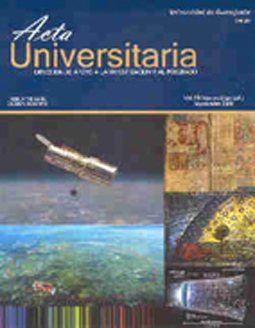Moléculas Orgánicas: Nuevos Componentes para Dispositivos Fotónicos y Opto-electrónicos
Published 2009-09-01
Keywords
- Organic materials,
- Photonics,
- Opto-electronics.
- Materiales orgánicos,
- Fotónica,
- Opto-electrónica.
How to Cite
Abstract
The technology development is rapidly growing every day and this has originated that it is available for most of the people. We have electronic and optical devices at home, in the office, in the car, etc. When we take a look inside of these devices, it is observed that they contain a huge number of small parts usually arranged on electronic cards. Let us imagine that every single piece of these cards could be substituted for a tiny unit of construction a million times smaller than the diameter of a human hair, and that these tiny units could be constituted by organic molecules. They would be mainly conformed per arrays of carbon and hydrogen atoms and could have changes in their structure or in their spatial conformations when light hit them. This can be used in electronic components to achieve better performance, in a very small volume and at low cost in their fabrication and operation. This field belongs to the organic photonics and organic opto-electronics.

